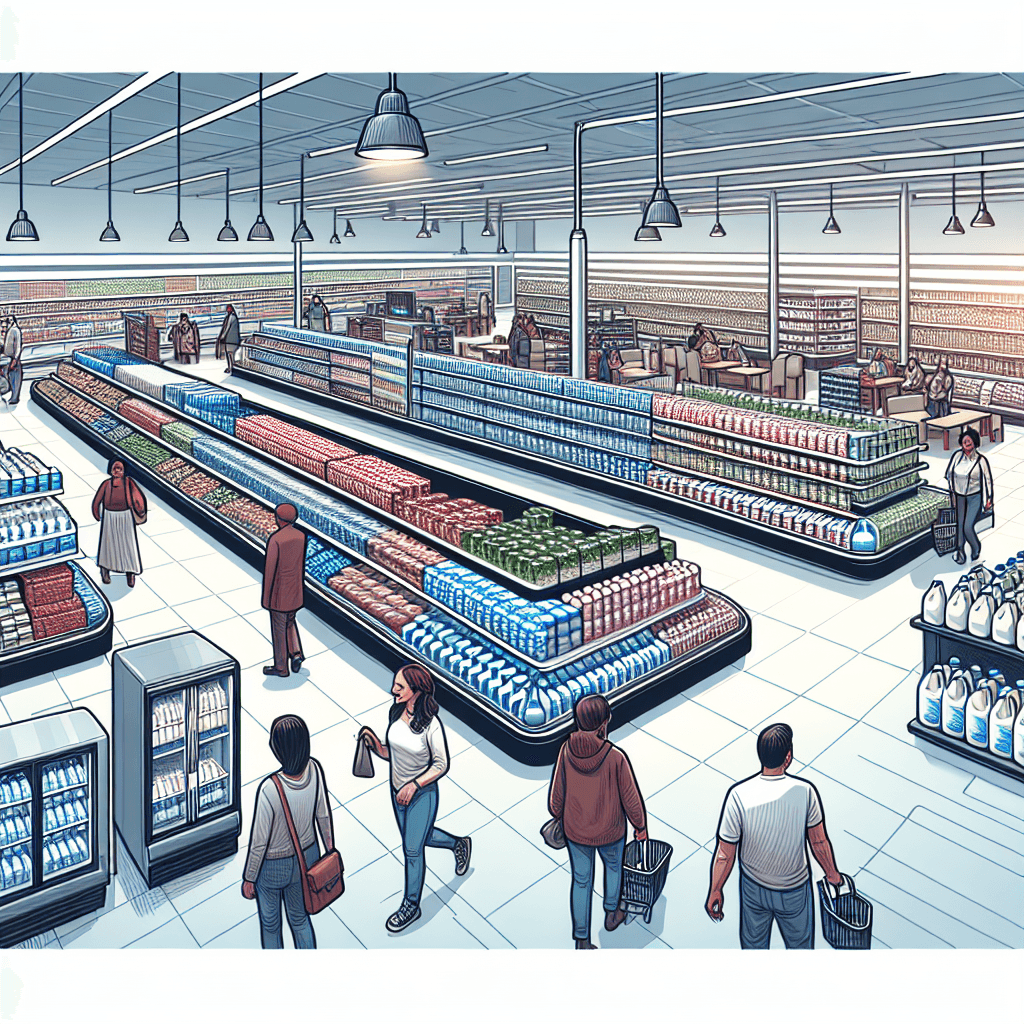Why is the milk always located at the very back of the grocery store
That long walk for a gallon of milk isn't an inconvenience; it's a brilliant retail strategy designed to get inside your wallet.


Too Long; Didn't Read
Stores put milk in the back to make you walk through the entire store, forcing you to pass other items and encouraging impulse buys. It is also close to the loading docks for easier restocking.
The Long Walk for a Gallon: Why Is the Milk Always Located at the Very Back of the Grocery Store?
You’ve been there before. You dash into the grocery store for just one essential item: milk. But what should be a two-minute trip turns into an odyssey, a winding journey past aisles of tempting snacks, colorful produce, and fragrant baked goods. By the time you reach the refrigerated haven at the far end of the store, your "quick trip" feels more like a full-fledged expedition. This experience isn't a coincidence; it's a meticulously planned retail strategy. The placement of milk, one of the most common grocery staples, is a masterclass in store layout, consumer psychology, and operational logistics. This post will unpack the strategic reasons behind that long walk to the dairy aisle.
The Psychology of the Path: Maximizing Exposure and Impulse Buys
The primary reason for placing milk at the back of the store is to guide you through the maximum possible retail space. Milk is what marketers call a "destination item"—a product that a vast majority of shoppers purchase on a regular basis. Retailers know you’ll make the trip for it, regardless of where it is.
By positioning it at the very back, the store forces you to travel past a huge number of other products. This journey is carefully curated to trigger impulse purchases.
- Increased Dwell Time: The longer you are in the store, the more you are likely to buy. The walk to the dairy section and back to the checkout maximizes your "dwell time."
- Exposure to High-Margin Items: The path to the milk is often lined with high-profit items like cookies, chips, sodas, and seasonal displays. While milk itself often has a low-profit margin, the products you grab along the way do not.
- The Gruen Transfer: This concept, named after mall architect Victor Gruen, describes the moment when a store's intentional layout causes shoppers to lose focus on their original mission. Overwhelmed by sights and deals, you transition from a goal-oriented buyer to a more aimless browser, making you far more susceptible to unplanned purchases. According to marketing research, a significant percentage of grocery purchases are made on impulse, a fact that store layouts are designed to exploit.
It's Not Just a Sales Tactic: The Practical Logistics
While maximizing sales is a huge factor, the placement of milk isn't purely a psychological ploy. There are powerful logistical and operational reasons that make the back of the store the most sensible location for the dairy department.
The Cold Chain and Restocking Efficiency
The back wall of a grocery store is a hub of activity and infrastructure. It's typically adjacent to the receiving docks, storage freezers, and walk-in coolers. Placing the dairy section here makes perfect sense for several reasons:
- Proximity to Loading Docks: Milk is heavy, bulky, and has a short shelf life. Locating the dairy coolers near the loading docks allows staff to move pallets from the delivery truck to the refrigerated shelves quickly and efficiently. This minimizes the time milk spends at room temperature, protecting its freshness and safety, and reduces the labor needed to restock.
- Refrigeration Infrastructure: The large, energy-intensive compressors and cooling units required for dairy cases are usually located at the back of the building for easier maintenance and to minimize noise on the sales floor. It's more cost-effective and structurally sound to group these units together.
The "Golden Triangle" of Store Layout
Retail designers often employ a strategy known as the "golden triangle," which is formed by the store's entrance, the checkout area, and a key destination item at the back. By placing staples like milk, meat, and the bakery along the store's perimeter, retailers encourage shoppers to walk the entire circumference of the store, creating a natural flow that exposes them to the maximum number of aisles in between.
A Deliberate Design for a Seamless Operation
In the end, the placement of milk at the back of the grocery store is a brilliant fusion of sales strategy and operational necessity. It’s a deliberate design choice that gently encourages you to spend more time—and more money—while also allowing the store to run more efficiently. This simple layout decision is a powerful reminder that every aspect of your shopping experience, from the music playing overhead to the location of the eggs, has been carefully considered. So, the next time you embark on your quest for a gallon of milk, you'll know that the long walk is a journey designed with both your shopping cart and the store's bottom line in mind.
More Articles

Why do movie punches sound so much crunchier and louder than real ones?
That sickening, bone-crunching punch you hear in the movies is a lie, and the secret ingredient is probably sitting in your refrigerator right now.

What makes a beer bottle suddenly foam over just from a light tap on top?
It’s not magic, it’s a shockwave; discover the explosive physics that turns a gentle tap on your beer bottle into an instant foamy geyser.

Why do police officers touch the back of a car during a traffic stop?
It’s not a random habit; that simple touch is a calculated, old-school tactic designed to leave a crucial and potentially life-saving piece of evidence behind.